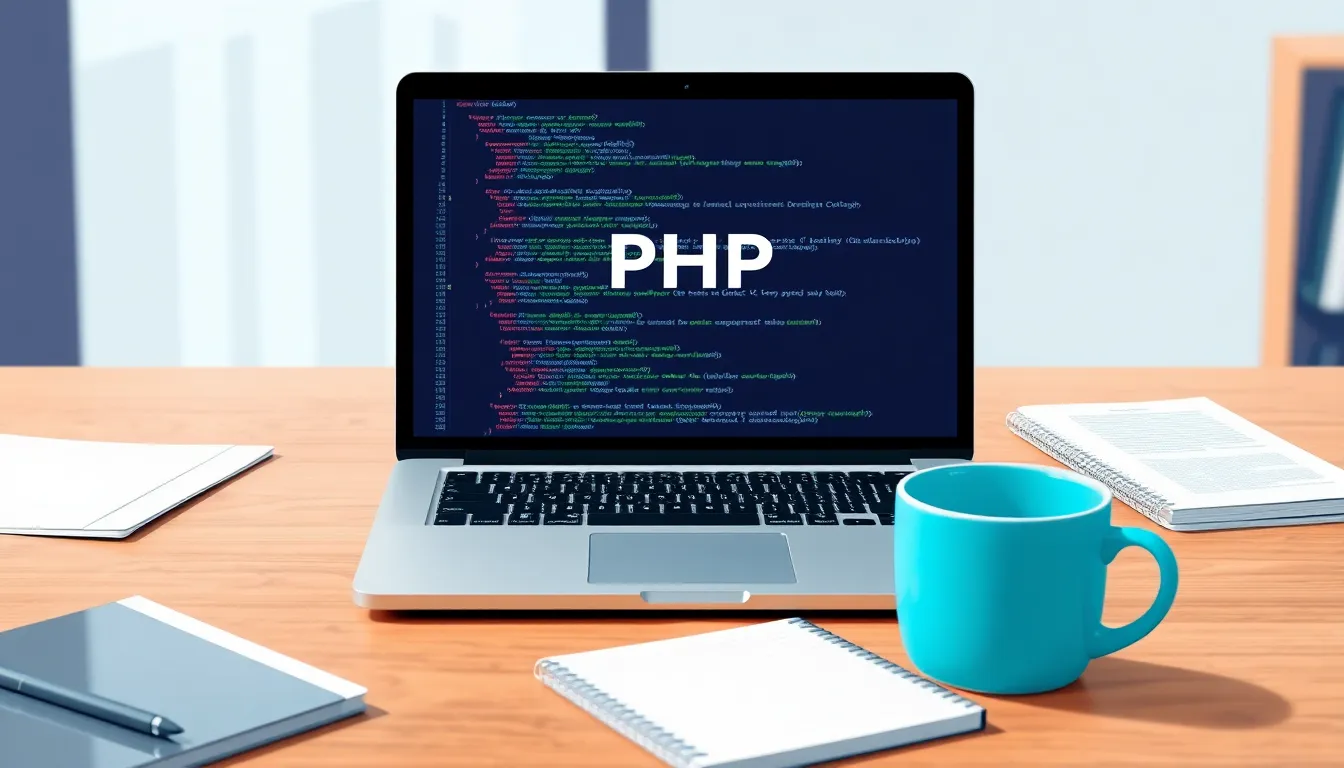WordPress and PHP are like peanut butter and jelly—each great on their own but even better together. If you’ve ever wondered how those stunning websites come to life, PHP is the secret sauce behind the scenes. It powers nearly 80% of all websites, and WordPress, the most popular content management system, relies heavily on it.
What Is WordPress PHP?
WordPress PHP refers to the PHP scripting language that forms the backbone of WordPress functionality. It acts as the engine driving various features and dynamic content generation on WordPress sites. PHP enables developers to create custom themes, plugins, and functionalities that enhance user experience. Around 80% of websites rely on PHP, showcasing its prominence in web development. WordPress utilizes PHP to interact with databases seamlessly, allowing for effective data management and content delivery. Various hooks and filters within WordPress allow developers to modify behavior without altering core files. Numerous PHP functions exist to facilitate tasks in WordPress. For example,get_posts retrieves post data, while wp_enqueue_script loads JavaScript files efficiently. These functions streamline development processes and help maintain optimal site performance.
Different WordPress components rely heavily on PHP. Themes leverage PHP files to generate the structure and layout of pages. Plugins extend functionality by utilizing PHP for additional features, ensuring that WordPress remains flexible and customizable.
Security remains paramount when working with WordPress PHP. It’s essential to follow coding best practices to protect against vulnerabilities. Developers often employ techniques such as prepared statements, data validation, and sanitization to secure applications.
Understanding WordPress PHP enhances the ability to build and maintain robust websites. As a versatile and powerful tool, PHP plays a critical role in defining the WordPress experience. It offers endless possibilities for developers and site owners looking to create unique online presences.
Importance of PHP in WordPress

Dynamic Content Generation
Dynamic content generation enhances user engagement on websites. PHP processes user inputs to deliver personalized experiences. For instance, when a user logs in, PHP retrieves user-specific data, displaying tailored content accordingly. This capability to adjust content in real-time significantly boosts user satisfaction. Various PHP functions streamline this process, allowing developers to create bespoke themes that showcase customized layouts and features. Engaging dynamic content keeps visitors returning, showcasing how essential PHP is in delivering a captivating online presence.Database Interactions
Effective database interactions ensure smooth data management within WordPress. PHP facilitates seamless communication between WordPress and its underlying database, typically MySQL. Through various functions, PHP retrieves, inserts, and updates data efficiently. The ability to execute these operations enables developers to create intricate functionalities, such as posts, comments, and user profiles. For example, using the get_posts function fetches specific post data from the database, while wp_insert_post handles new entries. By prioritizing data integrity and security, PHP maintains reliable interactions that underpin WordPress’s performance.Key PHP Functions in WordPress
WordPress utilizes various PHP functions that enhance its functionality and user experience. These functions play a vital role in managing data, rendering dynamic content, and facilitating site customization.Template Functions
Template functions provide essential features in WordPress themes. Functions likeget_header(), get_footer(), and the_title() deliver important elements for templates. These functions ensure that common site components appear consistently throughout the website. They streamline theme development by reducing the need for repetitive code. Customization becomes simpler with template functions, allowing developers to enhance layout and design without extensive coding skills.
WordPress Loop
The WordPress Loop processes individual posts within the main query. It retrieves posts from the database and formats them based on the specified template. By using the Loop, developers can display posts dynamically and efficiently. The structure typically involvesif (have_posts()), which checks for available posts, followed by the_post(), which sets up post data. This function allows for seamless integration of posts throughout the site, ensuring users receive relevant content aligned with their interests.
Customizing WordPress with PHP
Developers leverage PHP to customize WordPress, tailoring websites to meet specific needs. This customization enhances both functionality and aesthetics.Creating Custom Themes
Designers use PHP to create custom themes, allowing for unique visual experiences. Key functions such asget_header(), get_footer(), and the_title() streamline theme development. Each function provides essential structure for presenting content within templates. Theme creators utilize the WordPress Loop for dynamic content generation, ensuring that relevant posts display properly. Flexibility in styles and layouts leads to highly personalized websites. By customizing themes, developers improve user engagement and satisfaction.
Developing Plugins
Developers can enhance WordPress functionality through plugin development using PHP. Plugins extend core features, offering users unique tools and capabilities. Important hooks likeadd_action() and add_filter() integrate plugins with existing functionalities seamlessly. Custom plugins allow for tailored solutions that address specific website needs, such as enhanced security measures or custom post types. Each plugin can provide unique features without altering core WordPress files. This modular approach promotes a robust and maintainable site architecture.



